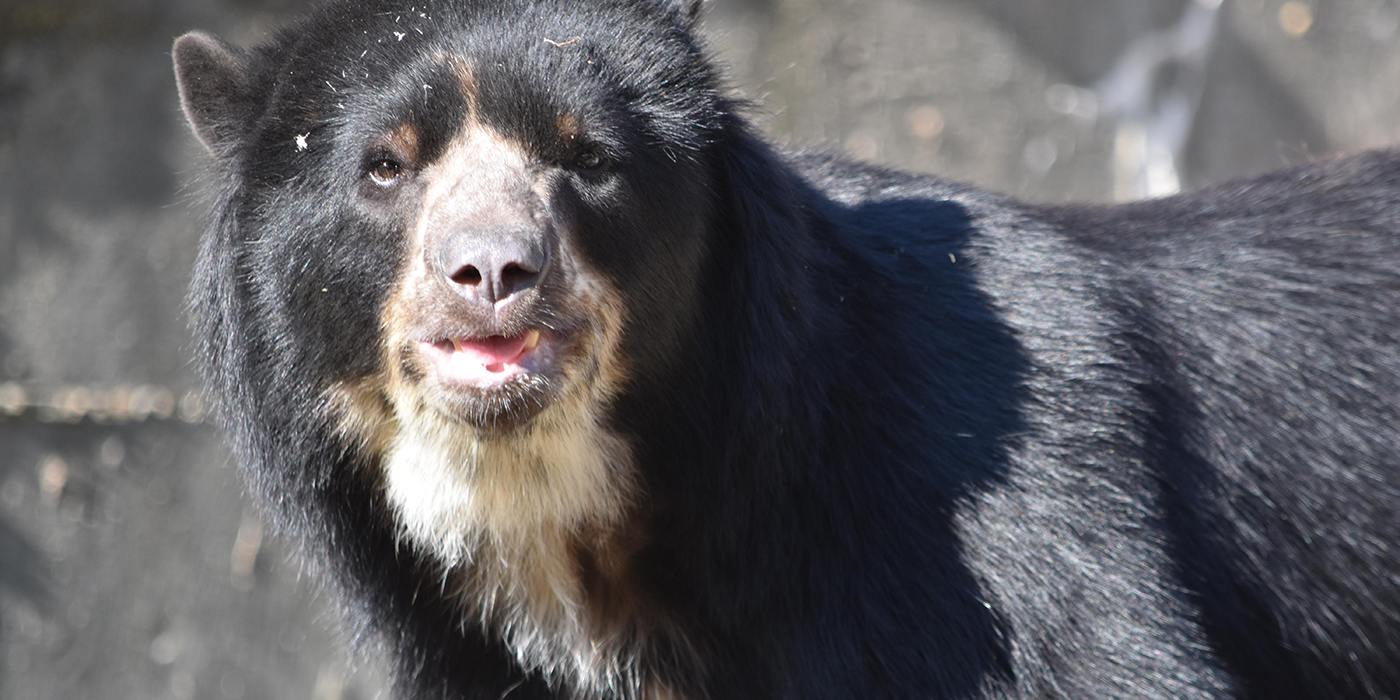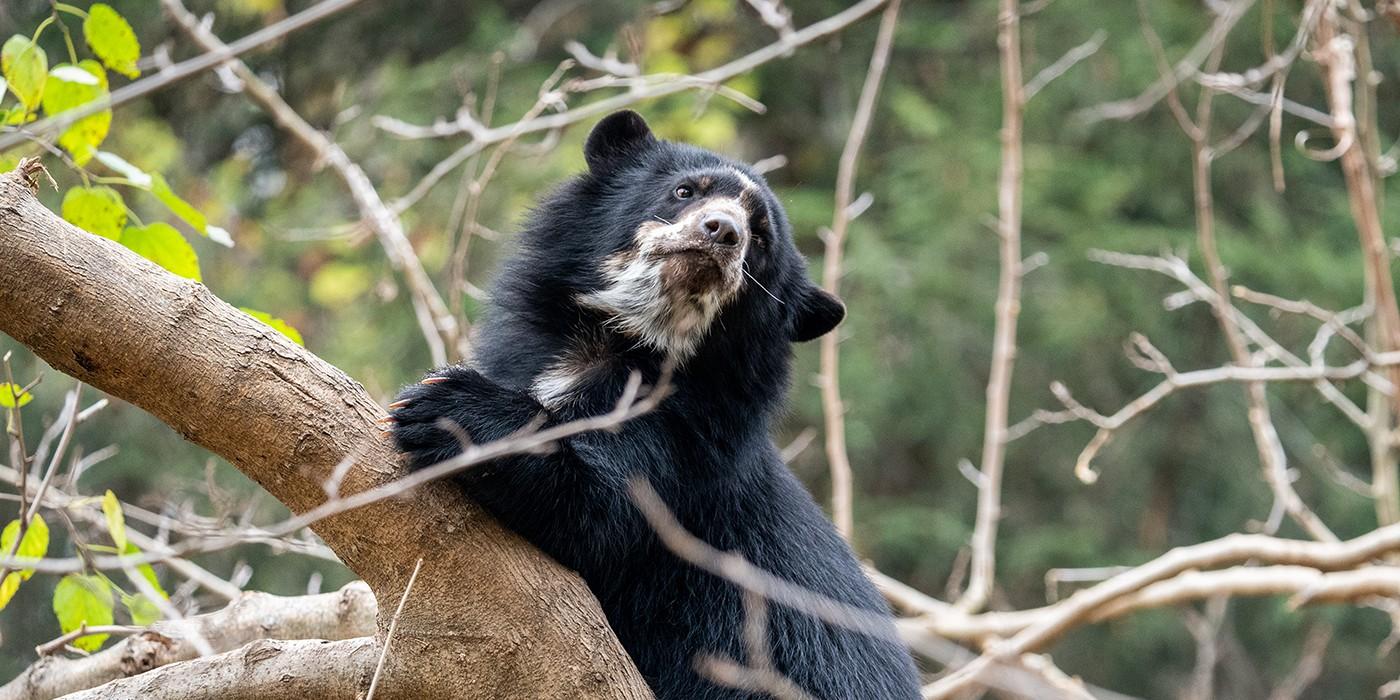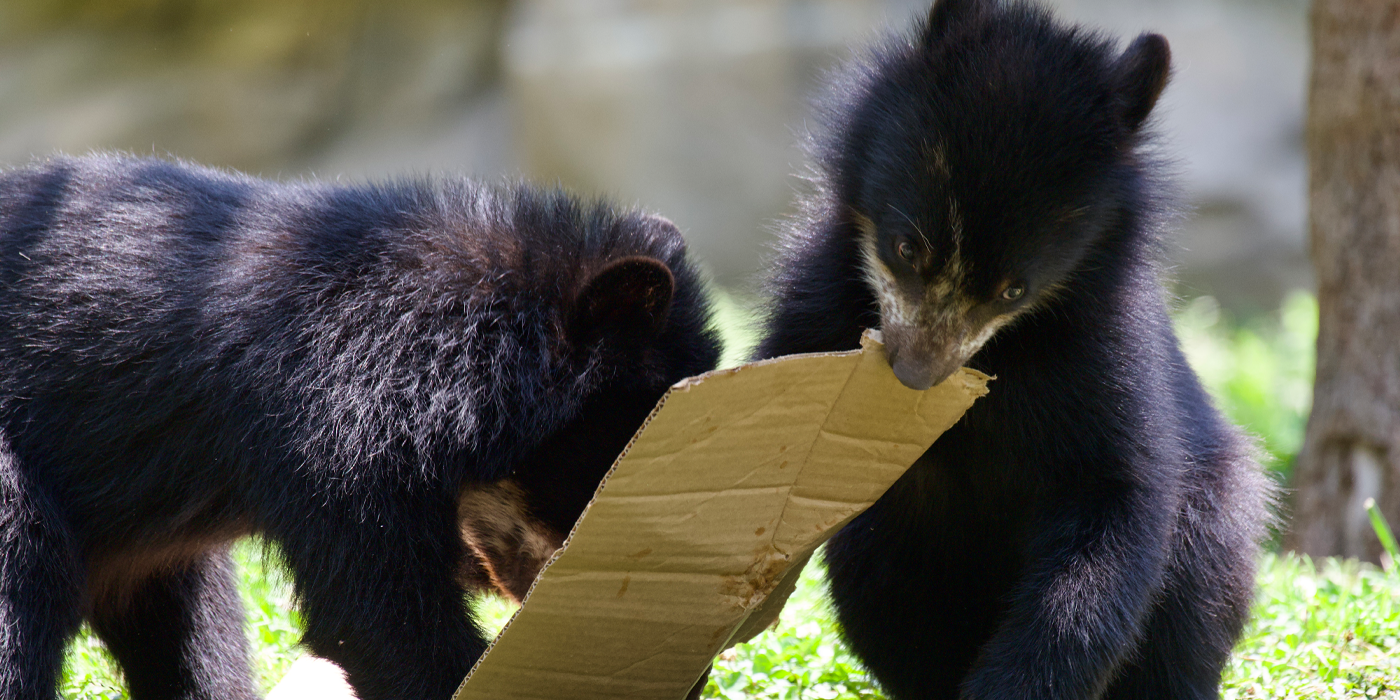Woo at the Zoo: Andean Bears
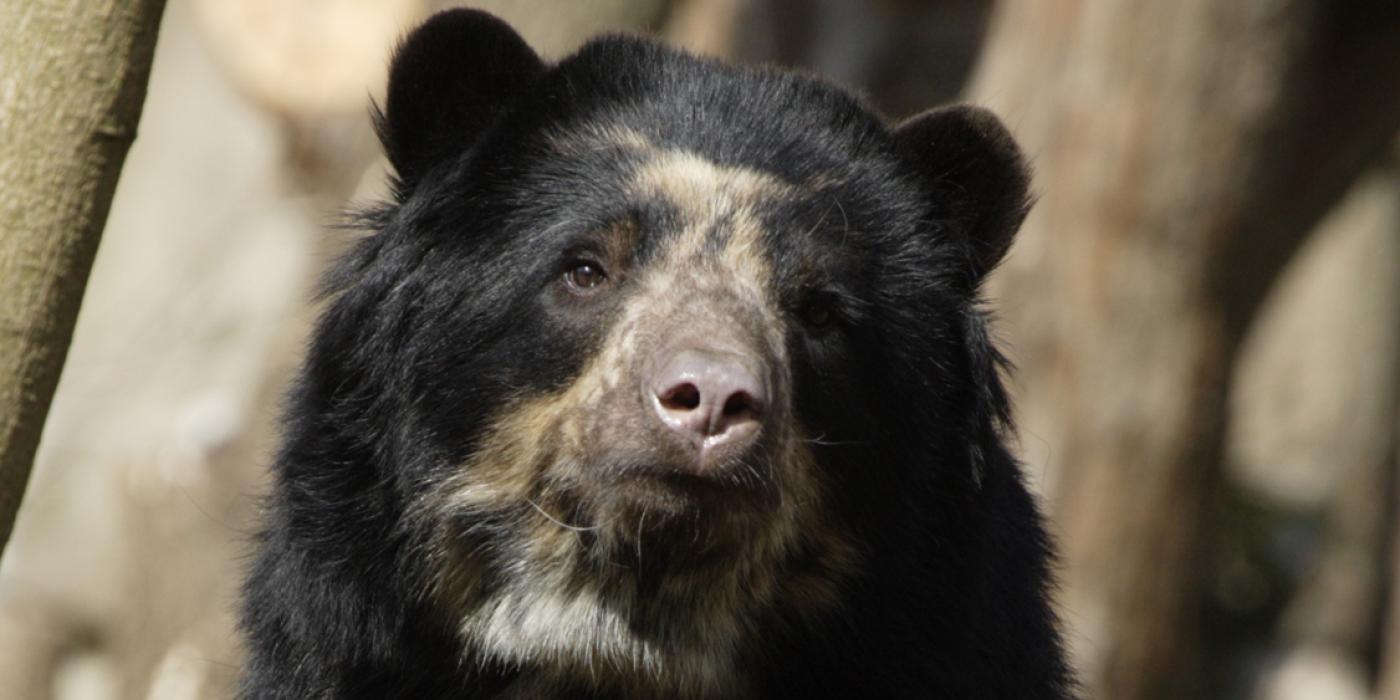
When animal keepers introduced Andean bears Billie Jean and Quito earlier this spring, it seemed that love was in the air. Or, was it hormones? To discover how hormones can affect a bear’s behavior during breeding season, keeper Sara Colandrea has teamed up with Smithsonian Conservation Biology Institute research fellow Natalia Prado. Together, they hope to crack the code of Andean bear reproduction and help other zoos produce bouncing baby bears.
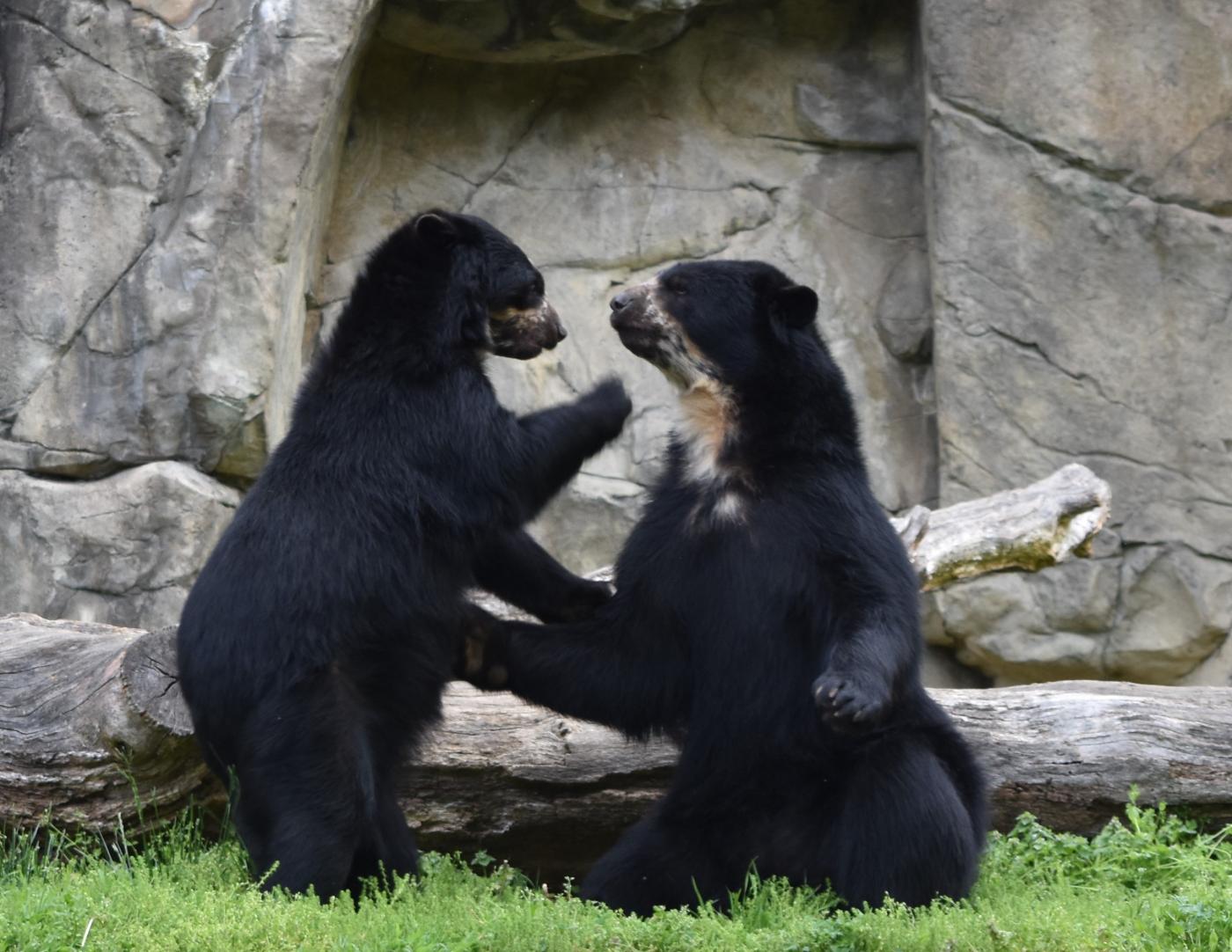
What behavioral cues do you look for when she goes into estrus?
When Billie Jean is in estrus, she starts to leave her preferred food items and behaves much more amicably towards our male bears, Bouba and Quito. Typically, when she is not in estrus, Billie Jean will bark or hit the shared mesh doors when our males get too close to them. However, when she is in estrus, she will sit calmly, sometimes licking at the males through the mesh door and make a low moaning vocalization toward them.
Bouba and Quito almost always seem to be interested in being around her whether or not she is in estrus. But when she is cycling, they become antsy to get to her. They will leave food—a rarity for our male bears! In addition, they vocalize incessantly with a “trill,” a call that solicits Billie Jean’s attention. Often, they bang against the doors of their enclosures. They can smell Billie Jean, and all of their attention is focused on trying to get to her.
Why are you studying Billie Jean’s hormones?
Not much is known about the specifics of Andean bear reproduction and physiology. Most of the information obtained over the years regarding breeding has been anecdotal and passed on verbally from keeper to keeper. What we interpret to be behavioral cues are educated guesses on our part. As keepers, we spend a lot of time around these bears. We know when their behavior is normal and when it is unusual. When we subjectively look at the behavioral cues and all signs are pointing to Billie Jean being in estrus, we are usually right.
The North American Species Survival Plan manages approximately 50 Andean bears. Since 2005, only nine cubs have been born and survived to adulthood in the North American zoo population. We have been very fortunate at the Smithsonian’s National Zoo to have managed Billie Jean through three breeding attempts, each of which resulted in cubs being born. Billie Jean is the mother to six and grandmother to two of the nine aforementioned cubs!
Due to the success that we have observed with Billie Jean, we have amassed a lot of subjective knowledge and suspicions of how and why we think these bears behave the way they do. As a husbandry team, we realized that even though we have suspicions of what is going on with these bears, we would benefit from having objective data to combine with our subjective knowledge. By putting these two sets of information—behavior and endocrine/hormones—we can turn what we “think” about these bears into what we “know” about them.
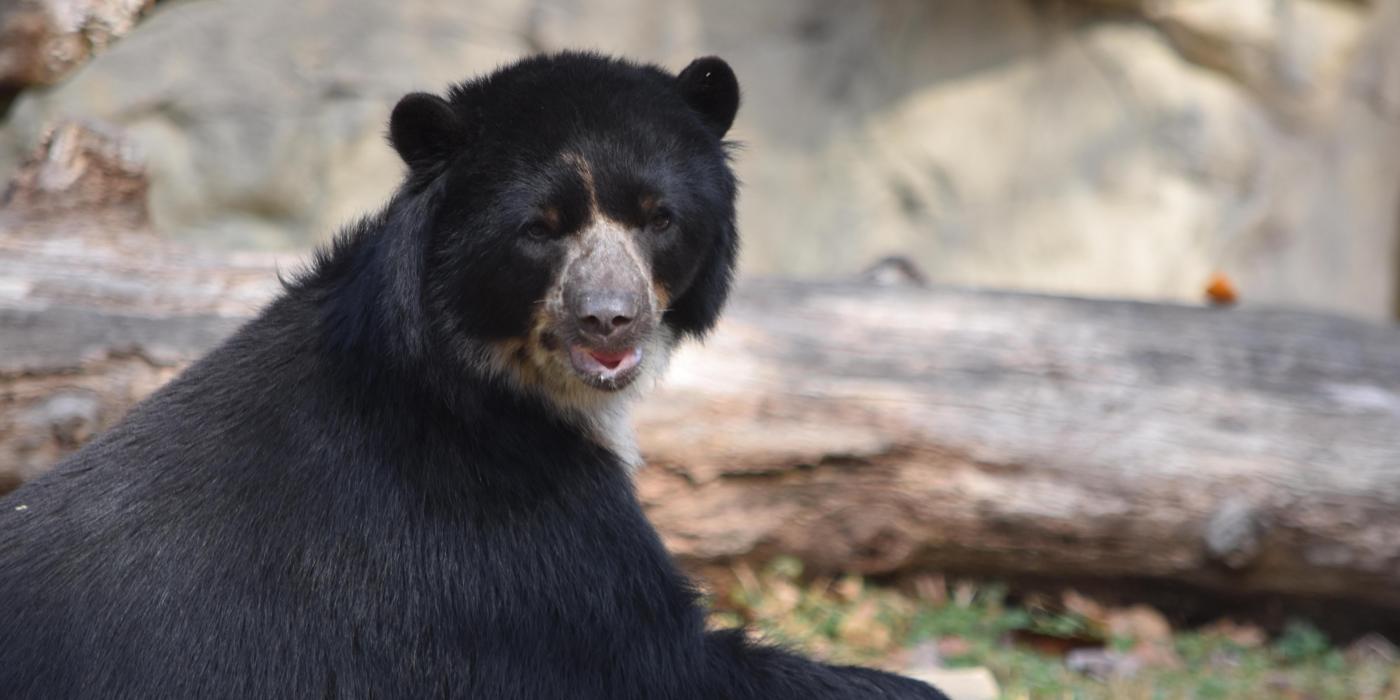
How do you analyze her hormones?
To analyze Billie Jean’s hormones, we are collecting both urine and fecal samples. We send our samples to the endocrine lab in the hope that this data will give us details about when Billie Jean’s hormones spike and diminish. By looking at both, we can determine which gives us a better signal.
This information could also alert us to more subtle clues to her estrus cycle that we may have been missing. For example, it has been a common thought that female Andean bears go into estrus once seasonally. However we are seeing from Billie Jean’s behavior that this may not be exactly right.
It may also help inform our decisions on how long bears remain in the same space.
What have you learned by studying her hormones thus far?
In 2016, Billie Jean was observed breeding with Cisco, the father of her previous cubs. She displayed behavioral clues that she may have been pregnant, such as spending more time in her den, and she gained weight. However, until we had conclusive evidence of the presence of cubs—such as an ultrasound or a cub birth—we really didn’t know if her behavior was indicative of a true pregnancy.
Through endocrine research that studied the hormones of giant pandas, we learned that some bears can experience pseudopregnancies—or false pregnancies. In a pseudopregnancy, the bear’s behavior and hormones look the same as if the female were pregnant, but she is not.
Because Andean bears experience delayed implantation (also known as embryonic diapause), we do not know exactly when a fertilized egg (blastocyst) attaches to the uterine wall. Females are not pregnant until the blastocyst implants. Nobody knows what the trigger is that dictates when this happens. What we do know is that it can take as long as six to eight months.
The possibility of pseudopregnancy, coupled with embryonic diapause, makes bear pregnancies nearly impossible to confirm. Despite all behavioral indications that Billie Jean was pregnant in 2016, unfortunately, no cubs were born. Her hormones from this period show elevated progesterone concentrations that stay elevated for roughly 60 days—the typical length of a bear gestation. Because no cubs were born, this could indicate that Andean bears, like giant pandas, experience pseudopregnancies. It is also possible that Billie Jean experienced a miscarriage, or may have resorbed the growing embryos.
We hope to compare the data gathered from her 2016 hormone profile to a pregnancy that results in cubs. We will be closely monitoring Billie Jean throughout the summer and fall. Our hope is that she will have cubs later this year.
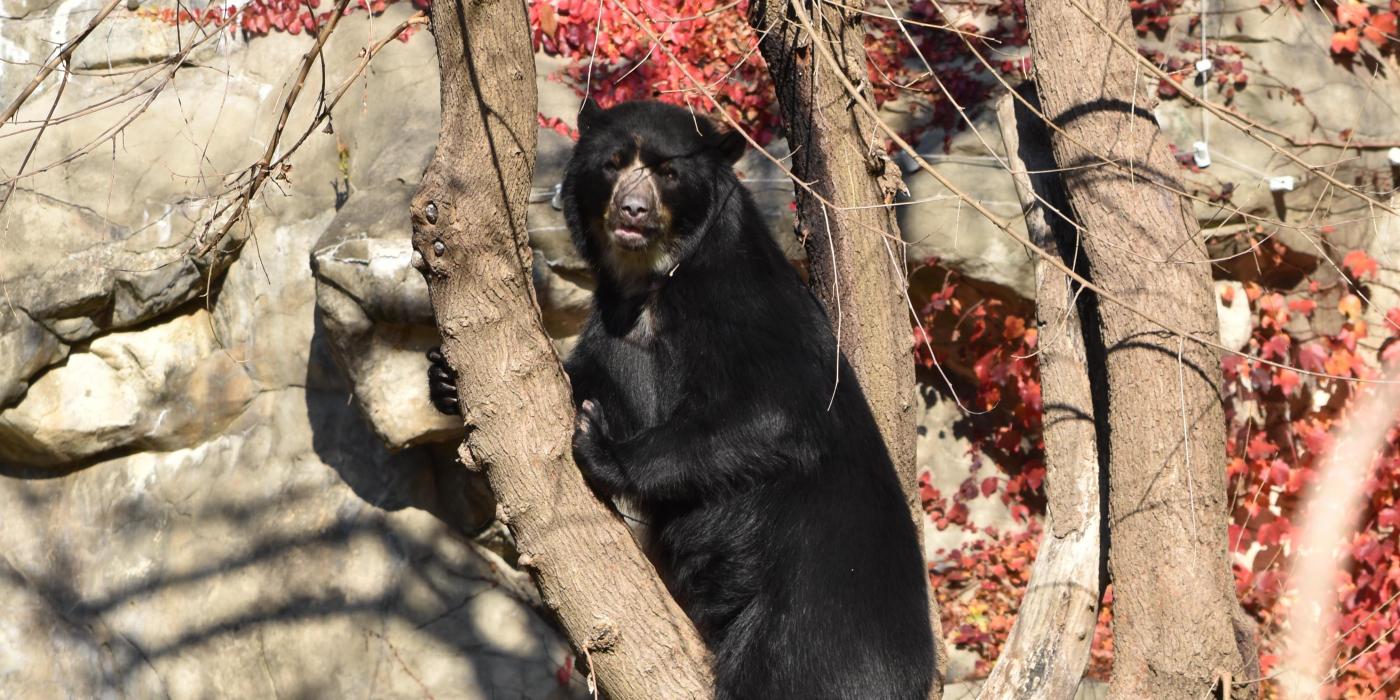
How could our study of Andean bear hormones help other zoos?
The population of Andean bears in the North American Species Survival Plan is getting to the point where older bears of non-breeding age are more numerous than younger ones of breeding age.
If we can pinpoint exactly when a female bear is in estrus and correlate that to specific behaviors, we can put bears together at the optimal time. Hopefully, this will increase the rate of successful conception and result in more cub births.
Part of our research is looking at hormones and other variables—daylight, weather and location, among other factors—to determine what makes a blastocyst implant. Blastocysts are extremely fragile; we want to determine if the way bears are managed in human care could affect the female’s ability to conceive.
If we can determine what conditions result in successful pregnancy and, ultimately, cubs, then we can share this knowledge with our colleagues.
Could this study help zoos breed other bear species?
Yes! At the Zoo, we manage three bear species: Andean bears, giant pandas and sloth bears. Most of the knowledge we have regarding bear reproduction pertains to giant pandas. It will be interesting to see how the data we gather from this study measures up. Little information exists about sloth bear reproduction, so our endocrinologists are studying their hormones as well.
Even though this project specifically focuses on cracking the code of Andean bear reproduction, keepers and scientists are working together to gain and disseminate as much knowledge as we can to help save all three species here at the Zoo, and possibly others as well.
This story was featured in the June 2018 issue of National Zoo News.
Related Species:
